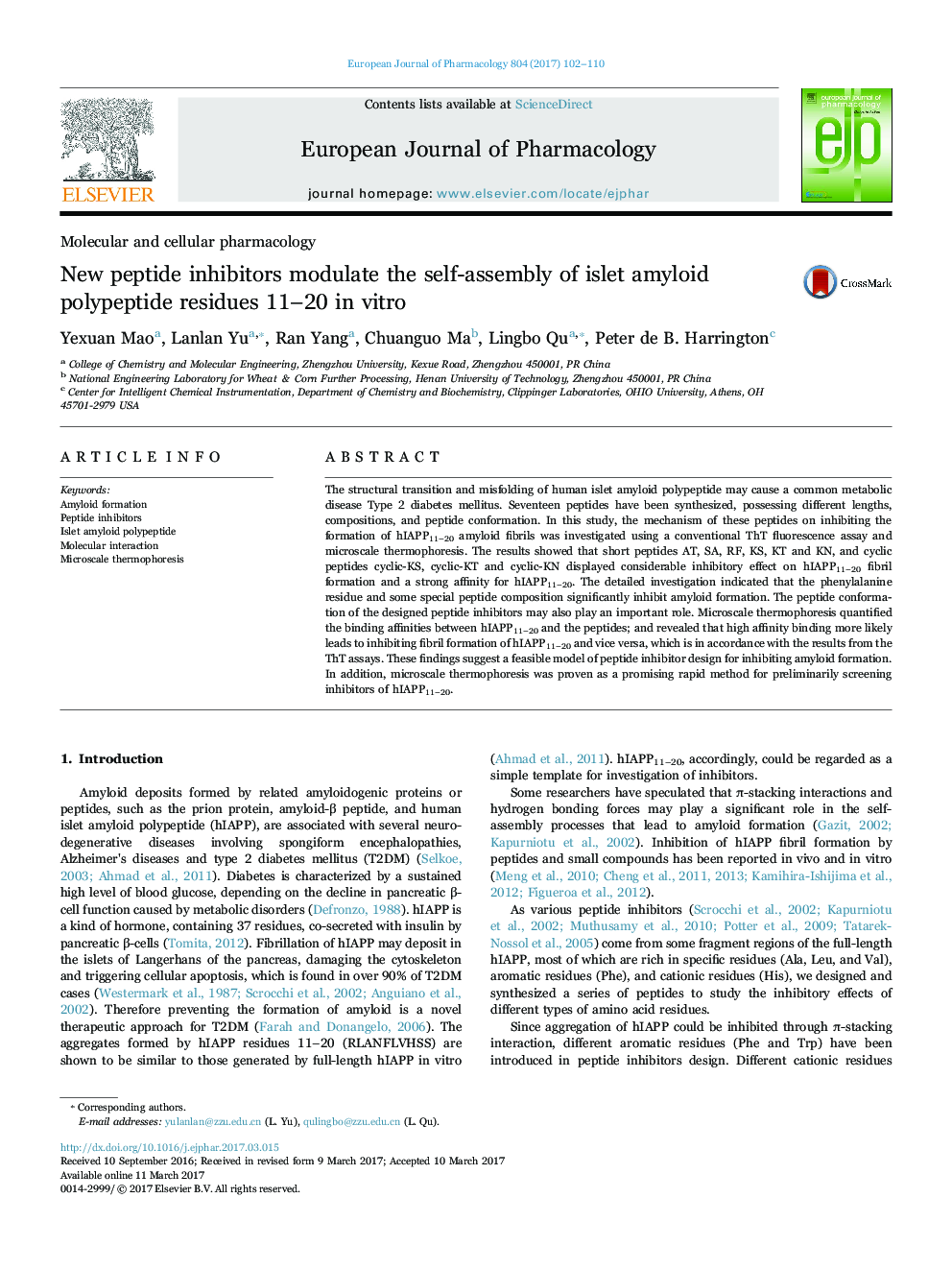| کد مقاله | کد نشریه | سال انتشار | مقاله انگلیسی | نسخه تمام متن |
|---|---|---|---|---|
| 5554621 | 1558876 | 2017 | 9 صفحه PDF | دانلود رایگان |
The structural transition and misfolding of human islet amyloid polypeptide may cause a common metabolic disease Type 2 diabetes mellitus. Seventeen peptides have been synthesized, possessing different lengths, compositions, and peptide conformation. In this study, the mechanism of these peptides on inhibiting the formation of hIAPP11-20 amyloid fibrils was investigated using a conventional ThT fluorescence assay and microscale thermophoresis. The results showed that short peptides AT, SA, RF, KS, KT and KN, and cyclic peptides cyclic-KS, cyclic-KT and cyclic-KN displayed considerable inhibitory effect on hIAPP11-20 fibril formation and a strong affinity for hIAPP11-20. The detailed investigation indicated that the phenylalanine residue and some special peptide composition significantly inhibit amyloid formation. The peptide conformation of the designed peptide inhibitors may also play an important role. Microscale thermophoresis quantified the binding affinities between hIAPP11-20 and the peptides; and revealed that high affinity binding more likely leads to inhibiting fibril formation of hIAPP11-20 and vice versa, which is in accordance with the results from the ThT assays. These findings suggest a feasible model of peptide inhibitor design for inhibiting amyloid formation. In addition, microscale thermophoresis was proven as a promising rapid method for preliminarily screening inhibitors of hIAPP11-20.
Journal: European Journal of Pharmacology - Volume 804, 5 June 2017, Pages 102-110
